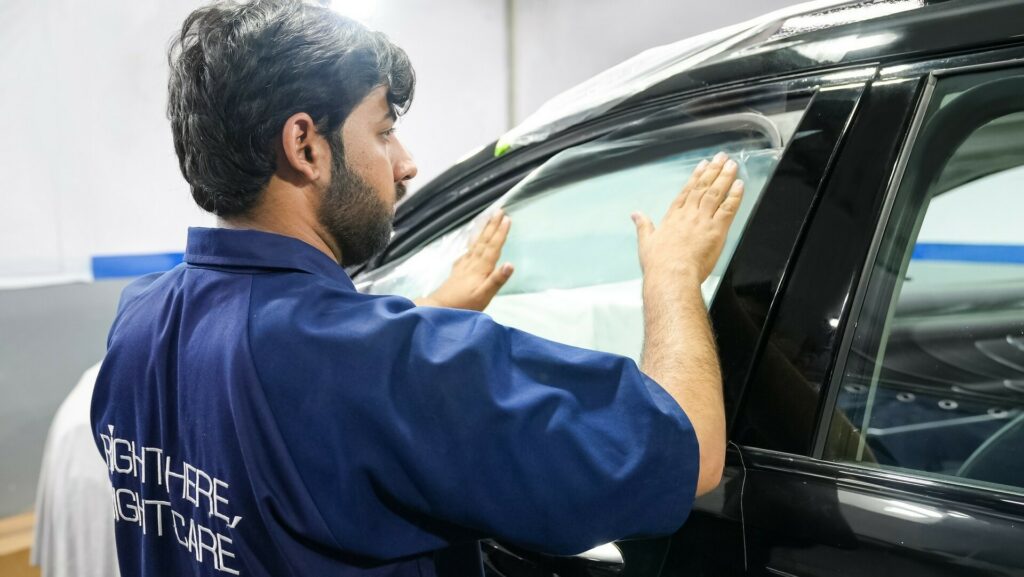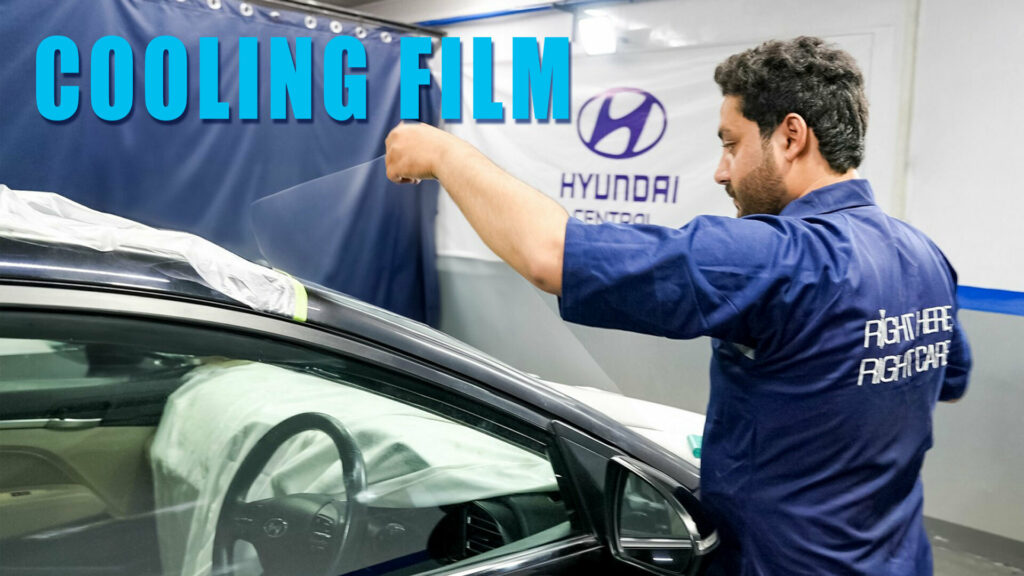- Hyundai is moving forward with the development of their Nano Cooling Film.
- It’s a transparent film that is applied to vehicles and helps to significantly lower interior temperatures.
- Testing has shown the film can reduce interior surface temperatures by up to 22° C (39.6° F).
This spring has been unseasonably warm and summer is right around the corner. That means hot cars and plenty of discomfort.
That might not be the case for much longer as Hyundai is moving forward with the development of their Nano Cooling Film, which was originally announced last summer. It’s billed as a “revolutionary vehicle window tint” that offers significantly better interior cooling performance than conventional tints.
More: VW And Toyota Interested In High-Tech Coating That Can Keep Cars Cool Under The Sun
To show its effectiveness in real-world scenarios, Hyundai has applied the film to 70 customer vehicles in Lahore, Pakistan. While that might sound like an odd place to conduct a test, Hyundai noted daily summer temperatures can top 50° C (122° F) and traditional window tints are prohibited for security reasons.
While the test in Pakistan is just getting underway, Hyundai said previous tests “found that Nano Cooling Film reduced the temperature near the driver’s head by up to 10.98° C (19.76° F) compared to conventional tint film, and up to 12.33° C (22.19° F) compared to the same vehicle without window tinting.” The film is even more effective at reducing interior surface temperatures as it lowered the crash pad temperature 15.38° C (27.68° F) compared to a vehicle with conventional tinting and 22°C (39.6° F) compared to a vehicle without tinting.
The latest round of testing is aimed to ensure the film’s quality and ability to withstand real-world conditions. This could be one of the final tests as Hyundai said the film will go into mass production in the future.
While the company didn’t mention a timeframe, the automaker said Nano Cooling Film effectively blocks external heat energy while also allowing internal heat to escape. As Hyundai explained, “The film’s outer layer radiates heat at mid-infrared wavelengths from the interior of the vehicle to the exterior, while the inner two layers reflect incoming heat at near-infrared wavelengths, reducing the total amount of heat that reaches the inside of the vehicle.”
Hyundai also noted the film can be applied in combination with conventional tints for even better results. This means Hyundai customers in places like Arizona, California, Texas, and New Mexico might return to a cool car in the future.


















